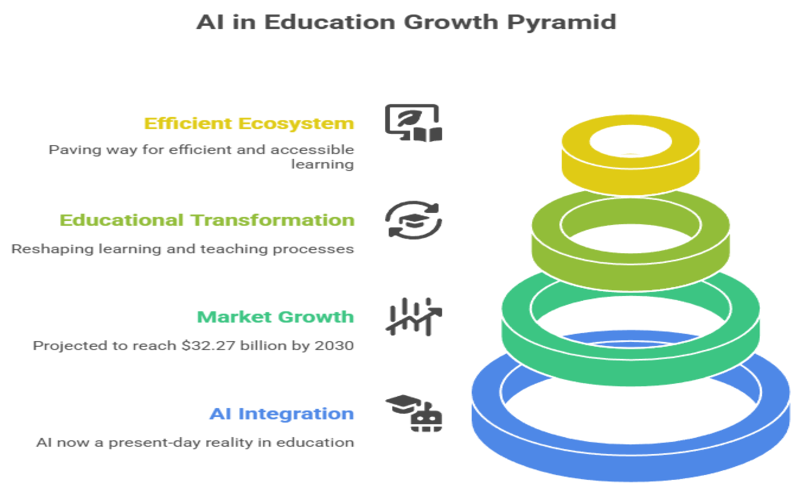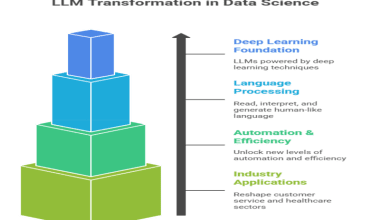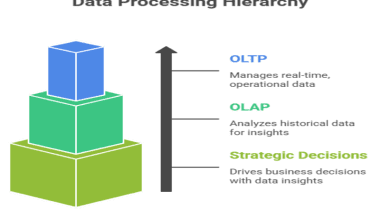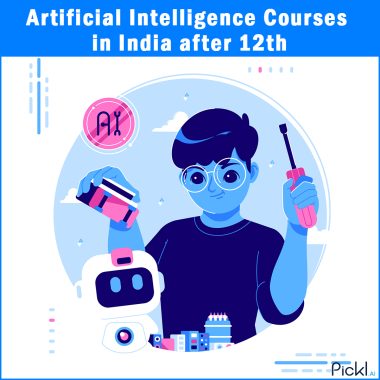Summary: Artificial intelligence in education is rapidly transforming learning. This article covers AI’s applications in personalized learning and automation, its benefits and challenges, and real-world case studies. It explores how AI supports students while evolving the essential role of human teachers in this new technological era.
Introduction
The integration of artificial intelligence in education is no longer a futuristic concept but a present-day reality, poised to reshape learning, teaching, and administrative processes for the better.
The global artificial intelligence in education market, valued at $2.5 billion in 2022, is projected to soar to an astounding $32.27 billion by 2030. This exponential growth underscores a seismic shift in the educational landscape.
From personalized learning paths to automated administrative tasks, AI is set to tackle some of the most persistent challenges in the sector, paving the way for a more efficient, accessible, and effective learning ecosystem.
Key Takeaways
- AI enables deeply personalized learning paths for every student’s unique needs.
- Automation of admin tasks lets teachers focus more on student mentorship.
- Real-world case studies already show AI improving student outcomes and success.
- Ethical challenges like data privacy and algorithmic bias must be addressed.
- The teacher’s role evolves to facilitator, not replacement, in an AI-enhanced classroom.
Applications of Artificial Intelligence in Education
Artificial intelligence is not a single entity but a constellation of technologies, each with unique applications in the educational sphere. These innovations are already making significant inroads, transforming traditional teaching and learning paradigms.
Personalized Learning at Scale
One of the most significant impacts of artificial intelligence in education is its ability to facilitate personalized learning. AI-powered adaptive learning platforms can analyze a student’s performance, learning style, and pace in real-time.
This allows for the creation of customized learning journeys, where content and difficulty levels are adjusted to meet individual needs. This tailored approach has been shown to boost student engagement, confidence, and, ultimately, academic performance.
Intelligent Tutoring Systems
AI-driven tutoring systems offer students one-on-one support anytime, anywhere. These systems can provide instant feedback, targeted practice exercises, and in-depth explanations of complex concepts, acting as a valuable supplement to classroom instruction.
Automation of Administrative Tasks
Educators are often bogged down by time-consuming administrative duties. AI can automate tasks such as grading, scheduling, taking attendance, and managing student records, freeing up teachers to focus on what they do best: teaching and interacting with students. This increased efficiency can lead to reduced workloads and greater job satisfaction for educators.
Enhanced Content Creation and Curation
AI tools can assist educators in developing and curating high-quality educational content. From generating lesson plans and quizzes to creating interactive simulations and virtual labs, AI can help make learning more engaging and dynamic.
Improved Accessibility
AI-powered technologies can make education more accessible for students with disabilities. Tools like speech-to-text and text-to-speech software, as well as AI-driven translation services, can help to break down barriers to learning.
Benefits of Using AI in the Classroom
The integration of artificial intelligence in education brings a multitude of benefits for students, teachers, and institutions alike.
For Students
AI fosters a more engaging and personalized learning experience, leading to improved outcomes and a deeper understanding of the subject matter. Students can learn at their own pace and receive immediate, targeted support.
For Teachers
By automating administrative tasks, AI allows educators to dedicate more time to individualized instruction and student interaction. Data-driven insights from AI platforms can help teachers identify struggling students and tailor their teaching strategies accordingly.
For Institutions
AI can lead to greater operational efficiency and cost savings by automating administrative processes. Predictive analytics can help institutions identify at-risk students and implement timely interventions to improve retention rates.
Challenges and Concerns Around AI in Education
Despite its immense potential, the adoption of artificial intelligence in education is not without its challenges and concerns.
Ethical Considerations and Bias
AI algorithms are only as unbiased as the data they are trained on. There is a risk that biased data could perpetuate and even amplify existing inequalities in education.
Data Privacy and Security
The use of AI in education involves the collection and analysis of vast amounts of student data, raising significant privacy and security concerns. It is crucial for institutions to have robust policies in place to protect this sensitive information.
The Digital Divide
Unequal access to technology and the internet could exacerbate the existing educational gap. Ensuring equitable access to AI-powered tools is essential to prevent a two-tiered education system from emerging.
Over-reliance on Technology
There is a concern that an over-reliance on AI could hinder the development of critical thinking and problem-solving skills. It is vital to strike a balance between leveraging technology and fostering essential human skills.
Case Studies – Successful AI Implementation in Schools and Universities
The transformative power of artificial intelligence in education is already being demonstrated in real-world settings.
Georgia Institute of Technology’s Jill Watson
In 2016, Georgia Tech introduced “Jill Watson,” an AI teaching assistant for an online course. Developed to handle the high volume of student questions, Jill was able to answer queries with such accuracy that students were often unable to distinguish her from her human counterparts.
This innovation has since evolved, with Jill now being used to fact-check information from other large language models and improve the overall learning experience. The use of Jill Watson has shown to enhance teaching presence and improve student retention rates.
Carnegie Learning’s MATHia
This AI-powered math learning platform provides personalized tutoring for students. By adapting to each student’s problem-solving process, MATHia has demonstrated significant improvements in standardized math test scores compared to traditional teaching methods.
Ivy Tech Community College’s Predictive Analytics
To combat high failure rates, Ivy Tech implemented an AI system to identify at-risk students within the first two weeks of the semester. By proactively offering support to these students, the college was able to significantly improve pass rates and overall student success.
Duolingo’s Language Learning
The popular language-learning app Duolingo utilizes AI to create personalized learning paths for its millions of users. The platform’s adaptive algorithms adjust to each user’s learning style and pace, making language acquisition more effective and engaging.
The Role of Teachers in an AI-Enhanced Education System
A common misconception is that AI will replace teachers. However, the reality is that the role of the teacher will evolve and become even more crucial in an AI-enhanced learning environment. While AI can handle many of the rote and administrative aspects of teaching, it cannot replicate the empathy, creativity, and mentorship that human educators provide.
In the classroom of the future, teachers will act as facilitators of learning, guiding students through their personalized educational journeys.
They will focus on fostering critical thinking, collaboration, and social-emotional skills—abilities that are uniquely human and essential for success in the 21st century. AI will serve as a powerful tool to augment, not replace, the invaluable contributions of teachers.
The Future of AI in Education
The future of artificial intelligence in education promises even more profound transformations. We can expect to see the increased integration of immersive technologies like virtual and augmented reality, creating highly engaging and interactive learning experiences. AI will continue to refine personalized learning, potentially shaping curricula based on individual career aspirations.
Furthermore, the development of AI literacy will become a critical component of education, equipping students with the skills to understand, use, and critically evaluate AI technologies. As AI becomes more deeply embedded in our society, it is essential that the next generation prepare to navigate this new technological landscape ethically and effectively.
Conclusion
The journey of integrating artificial intelligence in education is just beginning, but its potential to revolutionize the way we learn is undeniable. From personalized learning and automated administrative support to enhanced accessibility and engaging content, AI offers a wealth of opportunities to create a more effective and equitable education system for all.
While challenges related to ethics, privacy, and equity must be carefully navigate, the collaborative efforts of educators, policymakers, and technologists can ensure that AI harnesses as a force for positive change.
By embracing this technological evolution, we can empower both teachers and students, unlocking a future of learning that is more dynamic, personalized, and impactful than ever before. The focus should be on industry-specific applications and responsible implementation to maximize the benefits of this transformative technology.
Frequently Asked Questions
How is artificial intelligence used in education?
Artificial intelligence use in education in numerous ways, including personalized learning platforms that adapt to individual student needs, automated grading of assignments, and intelligent tutoring systems that provide instant support. AI also streamlines administrative tasks for educators, such as scheduling and record-keeping, and can help create more engaging and interactive learning content.
What are the aims of AI in education?
The primary aims of artificial intelligence in education are to make learning more personalized, effective, engaging, and accessible for all students. It also seeks to improve efficiency for educators by automating administrative tasks, allowing them to focus more on teaching and student interaction.
What is the role of artificial intelligence in the future of education?
In the future, artificial intelligence is expected to become an integral part of the education system, fundamentally transforming learning experiences. It will likely go beyond task automation to facilitate deeply personalized and immersive learning environments, making education more tailored to individual needs and future career paths.
What is the impact of AI in education?
The impact of artificial intelligence in education is multifaceted. It has the potential to significantly improve student outcomes and engagement through personalized learning. It can also increase teacher efficiency and job satisfaction by reducing administrative burdens. However, there are also potential negative impacts to consider, such as the risk of algorithmic bias, data privacy concerns, and the potential for a digital divide if not implemented equitably.



